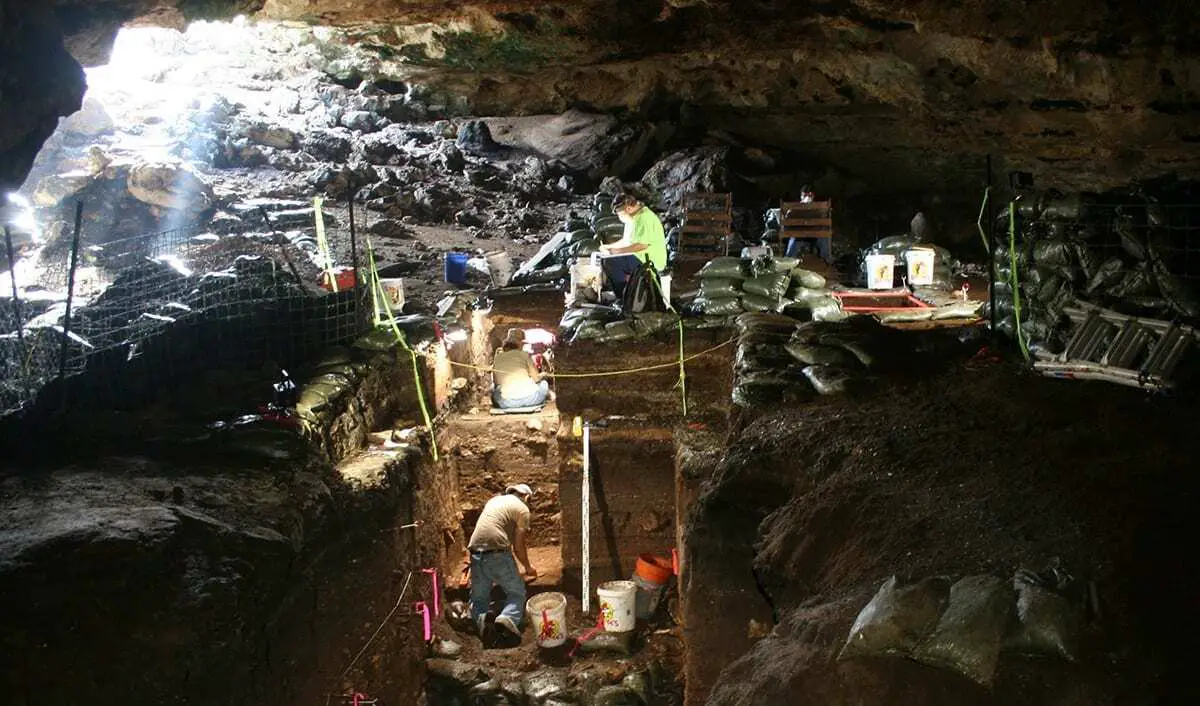Ancient sediment found in a central Texas cave appears to solve the mystery of why the Earth cooled suddenly about 13,000 years ago, according to a research study co-authored by a Texas A&M University professor.
Some researchers believed the event – which cooled the Earth by about 3 degrees Centigrade, a huge amount – was caused by an extraterrestrial impact with the Earth, such as a meteor collision.
But Waters and the team found that the evidence left in layers of sediment in Hall’s Cave were almost certainly the result of volcanic eruptions.
Waters said that Hall’s Cave, located in the Texas hill country, has a sediment record extending over 20,000 years and he first began researching the cave in 2017.
“It is an exceptional record that offers a unique opportunity for interdisciplinary cooperation to investigate a number of important research questions,” he said.
“One big question was, did an extraterrestrial impact occur near the end of the last ice age, about 13,000 years ago as the ice sheets covering Canada were melting, and cause an abrupt cooling that thrust the northern hemisphere back into the ice age for an extra 1,200 years?”
Waters and the team found that within the cave are layers of sediment, first identified by Thomas Stafford (Stafford Research Laboratories, Colorado), that dated to the time of the proposed impact that could answer the question and perhaps even identify the trigger that started the ancient cold snap.
The event also likely helped cause the extinction of large mammals such as mammoth, horse and camel that once roamed North America.
“This work shows that the geochemical signature associated with the cooling event is not unique but occurred four times between 9,000 and 15,000 years ago,” said Alan Brandon, professor of geosciences at University of Houston and head of the research team.
“Thus, the trigger for this cooling event didn’t come from space. Prior geochemical evidence for a large meteor exploding in the atmosphere instead reflects a period of major volcanic eruptions.
“I was skeptical,” Brandon said. “We took every avenue we could to come up with an alternative explanation, or even avoid, this conclusion. A volcanic eruption had been considered one possible explanation but was generally dismissed because there was no associated geochemical fingerprint.”
After a volcano erupts, the global spread of aerosols reflects incoming solar radiation away from Earth and may lead to global cooling post eruption for one to five years, depending on the size and timescales of the eruption, the team said.
“The Younger Dryas, which occurred about 13,000 years ago, disrupted distinct warming at the end of the last ice age,” said co-author Steven Forman, professor of geosciences at Baylor.
The Earth’s climate may have been at a tipping point at the end of Younger Dryas, possibly from the ice sheet discharge into the North Atlantic Ocean, enhanced snow cover and powerful volcanic eruptions that may have in combination led to intense Northern Hemisphere cooling, Forman said.
“This period of rapid cooling coincides with the extinction of a number of species, including camels and horses, and the appearance of the Clovis archaeological tradition,” said Waters.
Brandon and fellow University of Houston scientist Nan Sun completed the isotopic analysis of sediments collected from Hall’s Cave. They found that elements such as iridium, ruthenium, platinum, palladium and rhenium were not present in the correct proportions, meaning that a meteor or asteroid could not have caused the event.
“The isotope analysis and the relative proportion of the elements matched those that were found in previous volcanic gases,” said Sun, lead author of the report.
Volcanic eruptions cause their most severe cooling near the source, usually in the year of the eruption, with substantially less cooling in the years after the eruption, the team said.
The Younger Dryas cooling lasted about 1,200 years, “so a sole volcanic eruptive cause is an important initiating factor, but other Earth system changes, such as cooling of the oceans and more snow cover were needed to sustain this colder period, “Forman said.
Waters added that the bottom line is that “the chemical anomalies found in sediments dating to the beginning of the Younger Dryas are the result of volcanism and not an extraterrestrial impact.”
Header Image Credit : Mike Waters





